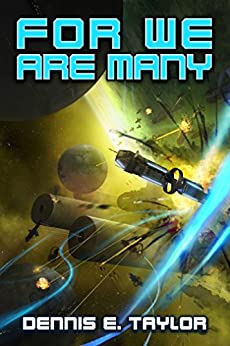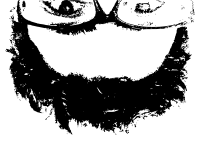📚 For We Are Many - Dennis E. Taylor (2017)
Slightly shorter than the first book, For We Are Many closes some arcs, develops others and starts new ones. I’m currently in a binging phase of sorts, and hope to burn through the Bobiverse ASAP.

True to its title, the second book in the series presents a much larger count of Bobs and makes progress on each of their corresponding stories. In addition to the original Bob, Bill, Riker and Homer from the previous book, we see new Bobs such as Howard, Jacques, Khan and Hal also take up important roles. There is an increased focus on the mental state of the Bobs and further exploration of the psychological implications of being an immortal human AI. In terms of plot, we see the conclusion of the VEHEMENT arc, followed by the reduced focus on Sol to make way for other systems such as that of Delta Pavonis. There is also official first contact with the alien species known as ‘The Others’ and an all-out war which escalates the stakes for the next book. Given the increased focus on psyche of the Bobs, its only natural that we see development of the many human emotions such as familial belonging, romance, revenge, depression and even suicide.
The book’s emotional meat comes from the longing for human attachment that some Bobs experience. This includes Riker’s recurring calls with Bob’s human descendants on Romulus and the original Bob’s sorrow due to his banishment from the Deltan tribe. Even Howard’s love for Bridget, a scientist on Vulcan, is initially unrequited due to the disembodied nature of the Bobs. Towards the end we see Jacques, a fairly new Bob, develop a sense of protection for the Pavs, a sentient species that he has been observing. Even Henry, the Australian replicant who previously goes insane, is brought into the fold and made to feel at home among the Bobs.
However, not all the emotions experienced by the Bobs are positive or harmless. After Homer’s rescue from VEHEMENT, he is unable to come to terms with the horrific acts he has been forced to commit. He soon deletes all his backups and destroys himself, effectively committing suicide. Even after exacting vengeance for Homer and ending the VEHEMENT group, Riker is perpetually gloomy after having lost a compatriot in Homer. Similarly, the Original Bob also has a hard time accepting the fact that his favorite Deltan and friend, Archimedes, is a mortal approaching the end of his lifespan.
The Bobs take some effort to alleviate this pervasive sense of alienation. This includes attempts at creating androids that can be controlled and used to experience reality as a human would. There is also talk on re-developing technology that allows the creation of more replicants so that other humans may also be made immortal similar to the original Bob. Through all this it is implied that all the urgent problem-solving that kept the Bobs busy until now will not be enough. That the Bobs will soon have to deal with all these strong emotions as a first-class problem, given their indefinite lifespan and perfect memory and human lineage.
The book also features the first real defeat for the Bobs at the hands of The Others, which is part of the overarching storyline as set up towards the end of the first book. Another important bit of setup is the rift between the older and ‘newer’ Bobs, through their attitude towards humans. One can easily predict that the conflict with The Others and the further widening of this generation gap between the Bobs will be the primary plots of the next book.
The book is similar to its predecessor in terms of style, although the dry humor is better interspersed with the more emotional highs as compared to the previous book. As opposed to the previous installment, time passes much faster and the book takes frequent ‘jumps’ forward into time. This could be justified by the interstellar scale of the story and the number of parallel plots, but it feels as if the author is getting impatient and is expediting the plot in order to get to the end. The arc of Delta Pavonis is barely developed from the perspective of the reader, making all the sorrowful reactions of the Bobs a bit distant. It is obviously introduced to be a large enough loss for the Bobs, while not being too inconvenient for the story. Towards the end, it also neatly wraps itself through the convenient discovery of another habitable planet, where the remaining survivors can be shipped to.
A second issue that previously wasn’t as big a deal is the shallowness of the tropes. Having John Cleese portray Jeeves while giving him zero dialogue, and then repeatedly reminding the reader of that fact, is in my opinion, incredibly wasteful. And this is, of course, notwithstanding the contrast between Cleese’s sledgehammer wit and Wodehouse’s characteristic subtlety. Even references to Guppy’s Admiral Ackbar get old really fast and you wish that the author would just drop it. I understand that these are intended purely as props, but either you’re obliged to develop them as you go or drop them completely; not mindlessly hammer the pop culture reference.
The author also seems to be at the limits of their vocabulary or simply wrote this one on a time crunch or something. Immediate examples that come to mind are Guppy’s ‘command fugue’ and a Bob ‘kibitzing’ some plan. These, among other phrases, are used enough times to make you wonder if the author has access to a thesaurus.
While not a bad book in many respects, I really think that For We Are Many could’ve taken the increase in page count instead of rushing the conflict with ‘The Others’. Whether it serves as reasonable bridge to the third book, remains to be seen.
Rating: (Average)
